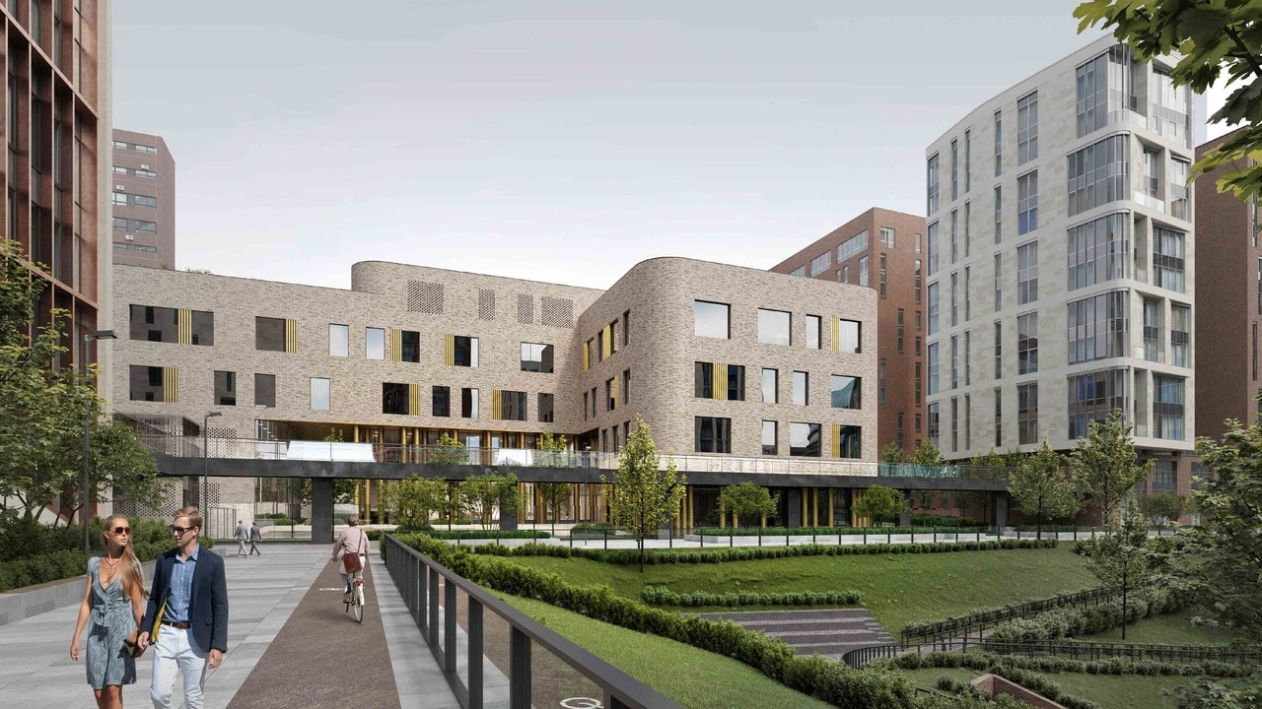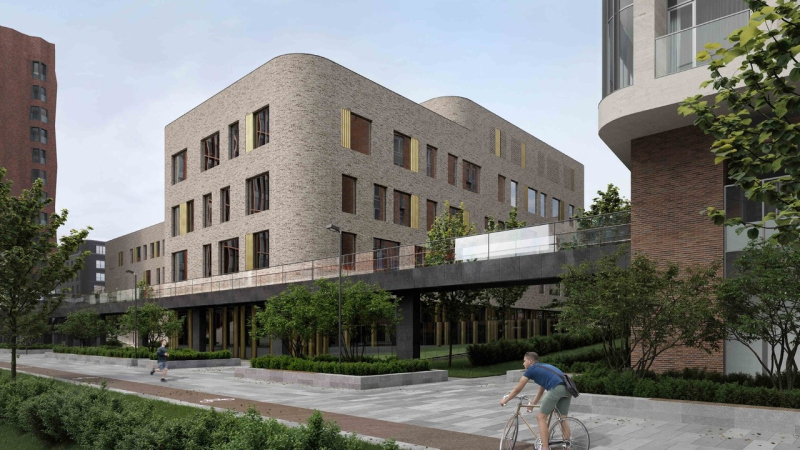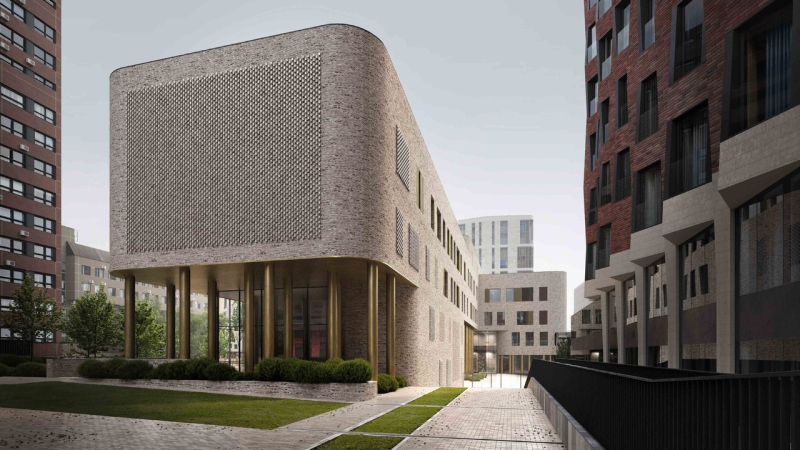Other competitors were:
- Semrén&Mansson (Goteborg, Stockholm, St. Petersburg),
- The consortium UNK Project (Moscow) + Storaket (Erevan) + Umnaya Shkola (Moscow),
- Sergey Skuratov Architects (Moscow),
- KAMEN (Moscow).
The school will become a part of the residential complex “Garden Quarters”, designed and to a large extent built upon the project by Sergey Skuratov Architects. Reportedly, it will be an innovative educational complex under the auspices of MGIMO (Moscow State University of Foreign Affairs). The construction will be managed by the non-profit partnership Inteco, MGIMO, and the foundation for supporting educational initiatives “Novy Vzglyad”. The construction will be financed privately and publicly. The “Region” Group of Companies already assigned 350 million rubles for the school construction, says the MGIMO website.
“Vostok” has already built next to “Garden Quarters”, north down the Usacheva Street, the high-end residential complex Magnum.
The press release published by the Committee for Architecture and Urban Planning of Moscow also says that the portfolio of “young architects” of the consortium “Vostok”+Martela includes “Khoroshkola” in the district of Khoroshevo-Mnevniki, the Letovo School, designed by Atelier PRO and built by ATRIUM, as well as the Cambridge International School in Skolkovo, built by the project of Tolga Kezer (Izmir). [The development of all of these schools involved the Martela company that specializes in “development and equipment of educational facilities” – editor’s note].
“We already have substantial ideas for forming the educational programs that will be based on human-centric approach in order to identify and develop every child’s individual talents” – shared the Rector of MGIMO, Anatoly Torkunov.
It is expected that the “Novy Vzglyad” school will be built on the territory of “Garden Quarters” by 2023.
The lineup of the judging panel included:
- Anatoly Torkunov, Rector of MGIMO, the chairman of the panel;
- Alexander Nikolaev, the president of Inteco JSC;
- Sergey Kuznetsov, chief architect of Moscow;
- Aleksey Emelyanov, the head of a Department for Cultural Heritage of Moscow;
- Natalia Kuzmina, vice-rector of MGIMO;
- Alexandra Kuzmina, chief architect of Moscow region;
- Anton Belov, the director of the museum of modern art Garage, and others.




































